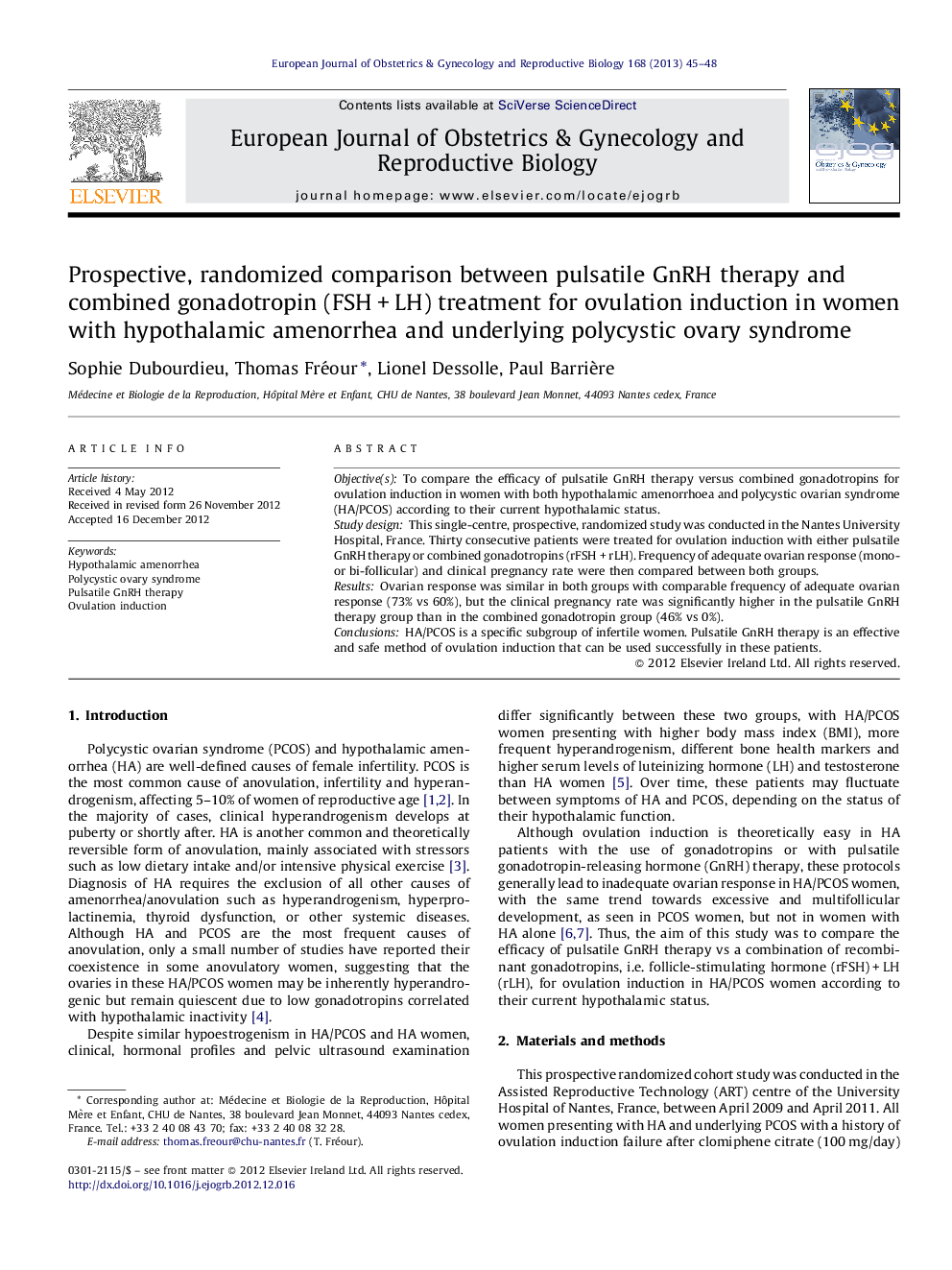| Article ID | Journal | Published Year | Pages | File Type |
|---|---|---|---|---|
| 3920036 | European Journal of Obstetrics & Gynecology and Reproductive Biology | 2013 | 4 Pages |
Objective(s)To compare the efficacy of pulsatile GnRH therapy versus combined gonadotropins for ovulation induction in women with both hypothalamic amenorrhoea and polycystic ovarian syndrome (HA/PCOS) according to their current hypothalamic status.Study designThis single-centre, prospective, randomized study was conducted in the Nantes University Hospital, France. Thirty consecutive patients were treated for ovulation induction with either pulsatile GnRH therapy or combined gonadotropins (rFSH + rLH). Frequency of adequate ovarian response (mono- or bi-follicular) and clinical pregnancy rate were then compared between both groups.ResultsOvarian response was similar in both groups with comparable frequency of adequate ovarian response (73% vs 60%), but the clinical pregnancy rate was significantly higher in the pulsatile GnRH therapy group than in the combined gonadotropin group (46% vs 0%).ConclusionsHA/PCOS is a specific subgroup of infertile women. Pulsatile GnRH therapy is an effective and safe method of ovulation induction that can be used successfully in these patients.
